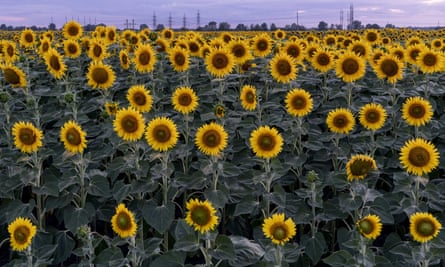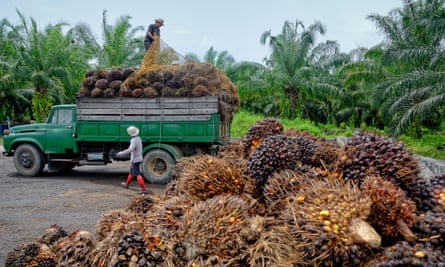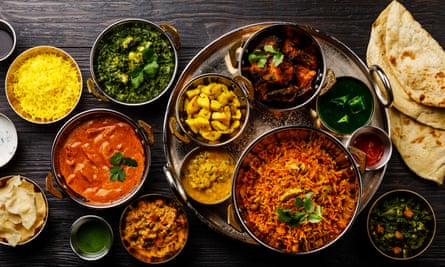Whether it’s chips, stir-fry or curry on the menu, the financial shock from the war in Ukraine is being felt keenly in the kitchen as cooking oil prices hit record highs.
The cost had already rocketed even before Vladimir Putin’s invasion, but now vegetable oil goes for £1.30 a litre at the supermarket, up 23p, or 22%, on a year ago. Sunflower oil – of which Ukraine and Russia are major producers – is up sharply too, by 17p to £1.34 a litre, according to NielsenIQ Scantrack data.
Three out of four households buy cooking oil, and in the UK they spend almost £400m a year on the stuff. Shoppers stock up every eight to 10 weeks, says NielsenIQ’s Mike Watkins, meaning there could be “shelf shock for many” when they return.
Besides being a cupboard staple, cooking oil is used throughout the food industry – from biscuits to ready meals to long-life cream – so cost rises and shortages have knock-on effects.
Vegetable oil price chart
This week, the UK’s biggest bottler of sunflower oil warned stocks were running low with only a few weeks’ worth left, and it emerged manufacturers of products that rely on it, such as crisps and oven chips, were being forced to change their recipes and use other types of oil.
Home cooks may cope with higher prices by changing their cooking method or trading down to cheaper supermarket own-label oils. However, for restaurants and food companies that use huge quantities of cooking oil, shortages and price increases are adding to the pressure caused by other rising costs.
Yawar Khan, who owns Akash Tandoori in Wallington in south London, says last month a 20-litre drum of vegetable oil cost about £22 at the cash-and-carry, but today the price is closer to £40. Buyers have also been limited to two drums each, in a sign of concerns about shortages.
So how did the price of this kitchen essential get so high?
War
 View image in fullscreenA sunflower crop near Horishni Plavni, Ukraine: supply of millions of tonnes of sunflower oil has been trapped in the country since the war began. Photograph: Evgeniy Maloletka/Bloomberg/Getty Images
View image in fullscreenA sunflower crop near Horishni Plavni, Ukraine: supply of millions of tonnes of sunflower oil has been trapped in the country since the war began. Photograph: Evgeniy Maloletka/Bloomberg/Getty Images
Ukraine and Russia account for about 60% of world production of sunflower oil, and the conflict has hit supplies hard. In UK stores sunflower oil is about a fifth of the market by value and 44% by volume, according to NielsenIQ. It is one of the “big four” vegetable oils, ranked behind palm, soya bean and rapeseed in that order (oil sold as “vegetable oil” is a blend of various seeds).
Sunflower oil price chart
When the supply of one of the big four is interrupted, it triggers a scrabble to buy a substitute. The price of sunflower oil jumped 60% after the invasion of Ukraine, from £1,130 per tonne in February to over £1,800 in March, according to analysts at Mintec. This had a knock-on effect on prices for palm, rapeseed and soya bean oil.
The war has trapped millions of tonnes of sunflower oil earmarked for foreign buyers in Ukraine, causing a major supply shock. “Overnight we had a situation where the market couldn’t offer because supplies weren’t coming from Ukraine into the EU and being processed, or from Ukraine to other countries around the world,” says Gary Lewis, of oil importer KTC Edibles.
Sunflower oil map
“The big impact in the UK and EU has been on rapeseed oil – as you can imagine, prices went absolutely crazy.”
The next few weeks will be key. Volodymyr Zelenskiy, the Ukrainian president, has encouraged those farmers not directly affected by the war to plant as much as possible, with the optimal time several weeks away. “If there is a ceasefire we will be able to assess what stocks are left in the country and when they’ll become available,” says Lewis. “The uncertainty is what has caused the panic-buying.”
Covid-19
 View image in fullscreenThe palm oil harvest in in Malaysia was hit when the country closed its borders because of the Covid crisis. Photograph: Melvin Migin/Alamy
View image in fullscreenThe palm oil harvest in in Malaysia was hit when the country closed its borders because of the Covid crisis. Photograph: Melvin Migin/Alamy
The pandemic’s rolling lockdowns fractured a delicately balanced global supply chain. From farmers to factories, freight handlers and retailers, the crisis caused huge upheaval and triggered see-sawing levels of demand. One big casualty was the palm oil harvest in Malaysia, the world’s second largest producer. Yields tumbled to a near 40-year low after it closed its doors to migrant workers who usually bring it in.
At the start of the pandemic palm oil was changing hands for about £500 a tonne, according to Mintec. A year in it was up 50%. Today it heads towards £1,300 a tonne, pushing up the cost of manufacturing everything that uses it, from cakes and biscuits to cosmetics, shampoo and washing powder.
Vito Martielli, senior analyst for grains and oilseeds at Rabobank, says the “stocks-to-use” ratio – a gauge of the health of the global vegetable oil market – has been falling for eight years, from about 16% in 2015, the equivalent of 58 days of supply, to about 12%, or 44 days.
Climate crisis
 View image in fullscreenCanada’s rapeseed producers had a disastrous growing season last year. Photograph: Peter Foerster/EPA
View image in fullscreenCanada’s rapeseed producers had a disastrous growing season last year. Photograph: Peter Foerster/EPA
In the past, the global market would see big supply shocks every five to seven years, but in the past 10 years these have become much more frequent, with climatic conditions like drought and frost and sometimes disease affecting crops more often, says Martielli.
In 2021 farmers in Canada, the biggest producer and exporter of rapeseed, had a disastrous growing season after temperatures soared to almost 50C. The soya bean oil price is marching up at the moment due to the smaller harvests expected from growers in Brazil, Argentina, and Paraguay – which account for more than 50% of world supply – after severe drought.
Last year drought in Ukraine and Russia propelled sunflower oil prices to a 12-year high of nearly £1,200 a tonne – although that record has been obliterated by financial shock of the war.
“Over the last couple of years we have seen lots of crop problems around the world,” adds Lewis. “The high temperatures in Canada had a massive impact on rapeseed production, which had an impact on EU prices, because these ripples travel across the world.”
Biofuels
 View image in fullscreenBiofuels are used to power vehicles and in industry. Photograph: Sean Gallup/Getty Images
View image in fullscreenBiofuels are used to power vehicles and in industry. Photograph: Sean Gallup/Getty Images
Biofuels account for about 15% of global demand for vegetable oil, according to Rabobank. This use, as countries seek to reduce their reliance on fossil fuels, has previously been blamed for pushing up food prices.
Ariel Brunner, head of EU policy at BirdLife International, an environmental NGO, recently told New Scientist: “We are literally burning a hell of a lot of food.” Governments had the power to change this because the biofuel market was entirely driven by subsidies, he added.
The loss of Ukraine and Russia’s sunflower oil could be mitigated by diverting crops away from fuel tanks. This would help to reduce food prices, a move that would benefit those on the lowest incomes the most.
Lewis says that 50%-60% of the rapeseed grown in Europe, and 60% of the palm oil imported by the region, goes into biodiesel. “Over the last 20 years the increase in demand for biodiesel has stimulated production but there is always going to be a crunch point where you get the debate over fuel versus food,” he says.
There was an argument for temporarily suspending the use of edible oils in biodiesel due to the current crisis, he said. “This would have a dramatic impact on the availability for the food industry and alleviate some of the pressures.”
“The biggest worry is pricing out our consumers”
 View image in fullscreenIndian restaurants and curry houses can get through 100 litres of cooking oil a week, says Yawar Khan, a restaurateur and chairman of the Asian Catering Federation. Photograph: Natalia Lisovskaya/Shutterstock
View image in fullscreenIndian restaurants and curry houses can get through 100 litres of cooking oil a week, says Yawar Khan, a restaurateur and chairman of the Asian Catering Federation. Photograph: Natalia Lisovskaya/Shutterstock
“We haven’t put our prices up yet but we are thinking about it,” says Khan, who says increases of 10% to 15% will be required this month to cover his restaurant’s higher running costs.
Khan, who is also the chair of the Asian Catering Federation, says his restaurant uses 40 litres of oil a week but larger venues could get through 100 litres. The biggest concern of the group’s members, he says, is that they are reluctant to increase prices to cover the increase in overheads for fear of “pricing out” would-be diners. “If the eating out bill goes up £10 or £20, how many times are you going to visit your local restaurant or order takeaway?”
His restaurant’s economics are also being affected by the soaring cost of chicken, spices and spiralling wages, which are up by 15%-20% this year.

